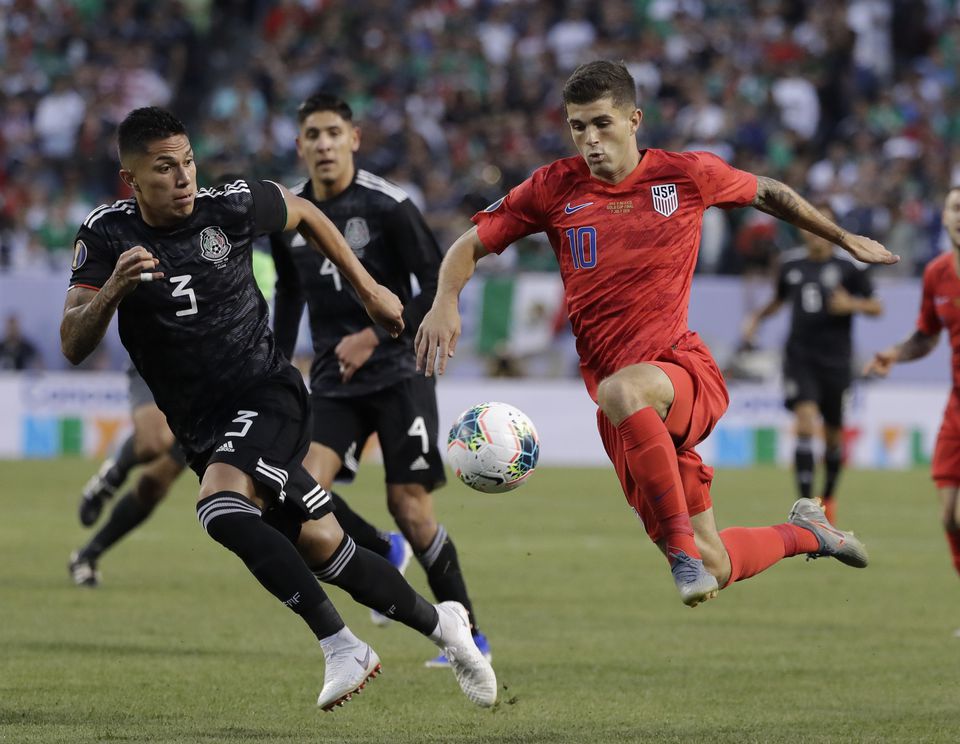The United States and Mexico were always going to be strong favorites to reach the World Cup in 2022, even after the US men failed to do so in the previous cycle. But new changes to CONCACAF’s qualifying system make it even more likely that the top teams in the region will get through.

CONCACAF announced the new format on Wednesday, revealing a system that offers something for both the largest and the smallest nations in the region.
Multi-Stage Qualifying Process Simplified
Previously, teams in North and Central America fought through a multi-stage process in an attempt to qualify for the World Cup.
The first stage saw home-and-away matches played between pairs of the lowest ranked nations in the region, like Bermuda and the Bahamas. The winners moved on to the second round, where more two-leg matches were held, only with the addition of somewhat stronger nations like Canada and Guatemala. The winners then were thrown into one more 12-team set of home-and-away contests, with Haiti and Jamaica added to this stage.
Only then, when the CONCACAF field was cut to 12 teams in total, would pool play begin. Top nations like Mexico, the United States, and Costa Rica joined the earlier qualifiers for the fourth round, with the teams divided into three pools of four teams each. The top two teams in each pool would then advance to the final round of qualifying, known as “The Hexagonal,†from which the top three teams would qualify directly for the World Cup, while the fourth would play in an intercontinental playoff for another position.
The new system simplifies the process. The top six teams in the FIFA rankings after international play ends in June 2020 will automatically be selected for the final round, from which three will qualify for the World Cup.
The remaining teams will then be seeded into eight groups for home-and-away play. The winner of each group will reach a knockout phase, and the overall winner of the tournament will take on the fourth-placed team from the Hexagonal for the right to play in the Hexagonal playoff.
Smallest CONCACAF Nations Get Meaningful Matches
The idea is twofold: to ensure the top teams have the best chance possible for World Cup qualifying, and to give lower-ranked teams more meaningful, competitive matches as they try to build their programs.
“This new FIFA World Cup Qualifying format, based on the FIFA rankings, makes every competitive match count,†CONCACAF president Victory Montagliani said in a statement. “Alongside the CONCACAF Nations League, and our expanded Gold Cup, it will raise standards of play to unprecedented levels and develop the sport across the region.â€
But not everyone will benefit equally from the format. Mexico, the United States, and Costa Rica are nearly guaranteed to reach the Hexagonal, making this format much safer for them. The lowest-ranked teams will play at least a few competitive matches, something they weren’t guaranteed of previously.
On the other hand, second-tier teams now have a much tougher road to the World Cup. Nations like Canada, Haiti, and Curacao would likely have had their chance to take on the top teams in the Fourth round for a shot in the Hexagonal in previous cycles, and instead now only have one narrow path to the World Cup.
Whether the chances are for the best or not, they’re only temporary. Starting with the 2026 World Cup, 48 nations will participate, meaning CONCACAF will need to come up with a new qualifying format given that all regions will get more teams into the tournament.
In the meantime, the new format won’t impact the 2022 World Cup odds much. Only Mexico (50/1) and the United States (66/1) are considered even dark horse contenders to win the tournament, and no CONCACAF team has advanced past the quarterfinals of the World Cup since the initial tournament in 1930, when the USA finished in third place.











